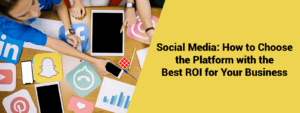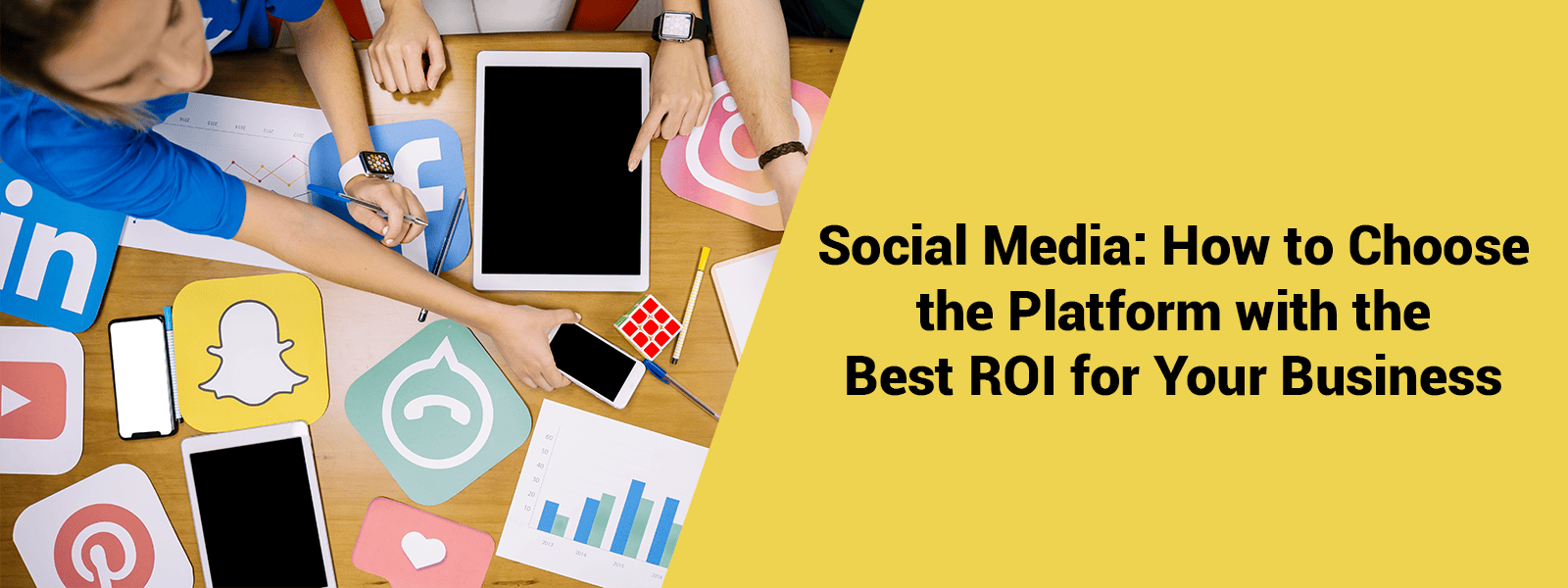
There are currently over 3.4 billion (and growing!) social media users. These users spend over two hours and 16 minutes daily on social media platforms, representing a seventh of their waking lives.
In terms of business, 31 percent of referral traffic comes from social media alone. These statistics are just some of the reasons why your business needs to be on social media.
Marketers consider these social platforms important, with more than 52 percent of those using social media saying it has helped them increase sales and revenue.
Some of the benefits of social media include:

Image Source: Statista
- Faster and easier communication as customers can contact your business easily. They get real feedback in real-time.
- Increases networking and partnership opportunities that allow your business to acquire quality backlinks and increase business opportunities.
- Boosts organic visibility. Social media sends relevant signals to search engines, making content popular and shareable.
- Increases website and foot traffic. It drives product discovery, which leads to more purchases.
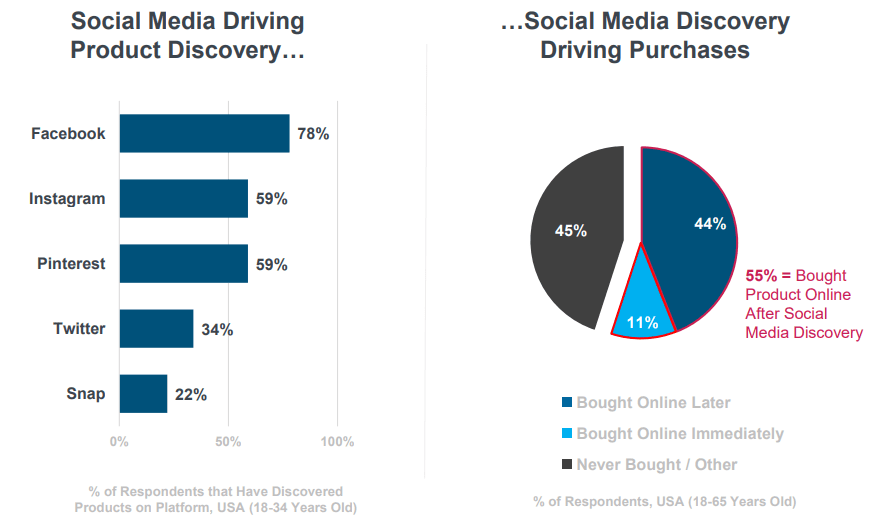
Image Source: Kleiner Perkins
- It allows your business to interact with customers directly. You get feedback directly from the source. You can use this to build the brand’s reputation and grow a loyal customer base.
- Impress potential customers with positive reviews and good ratings. Consumers will only trust a business if it has an average of 10 recent online reviews (within the past two weeks). Fifty-seven percent of the consumers will also use a business if it has ratings of 4 and above. A huge number of consumers will visit your website after reading positive reviews.
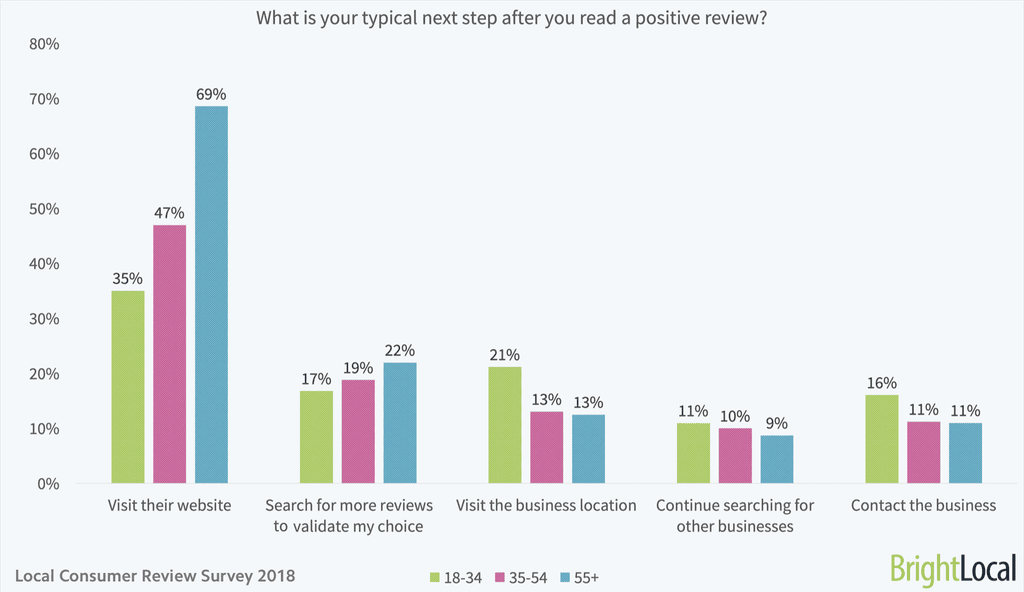
Image Source: BrightLocal
- Social media allows your brand to create a positive impression and build a reputation. It helps businesses keep the brand on their minds, therefore, helping maximize conversion channels.
- It helps you track your competition and keep up with industry trends.
- It helps businesses take advantage of user-generated content, which is free and unique — the same with crowdsourced content. For example, users can post content with specific hashtags throughout the social networks leading to increased brand exposure.
However, social media can be daunting. It’s not as simple as being on every platform and hoping something will stick. Success while using social media is more than putting up regular posts. Some of these most common challenges social media marketers face are: not having a strategy, not getting followers, tracking results, and selecting channels.
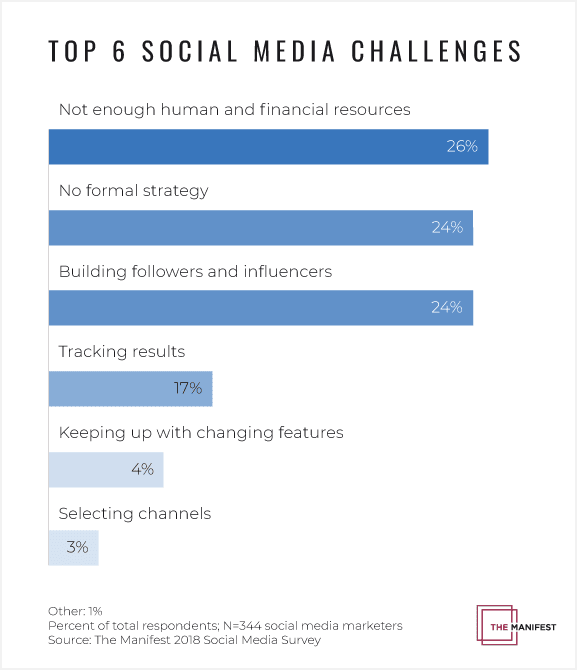
Image Source: The Manifest
To succeed in social media, you need to choose the right channels. Channels that will help you fulfill business goals and give you a return on investment for your efforts.
The decision to choose a social media platform is a strategic one that needs to be thought through carefully. In this piece, we will tell you how to go about choosing the best platforms for your business. We will also provide information on the most popular platforms so that you can identify the best ones and how to get started on them.
How to Choose the Best Social Media Platform
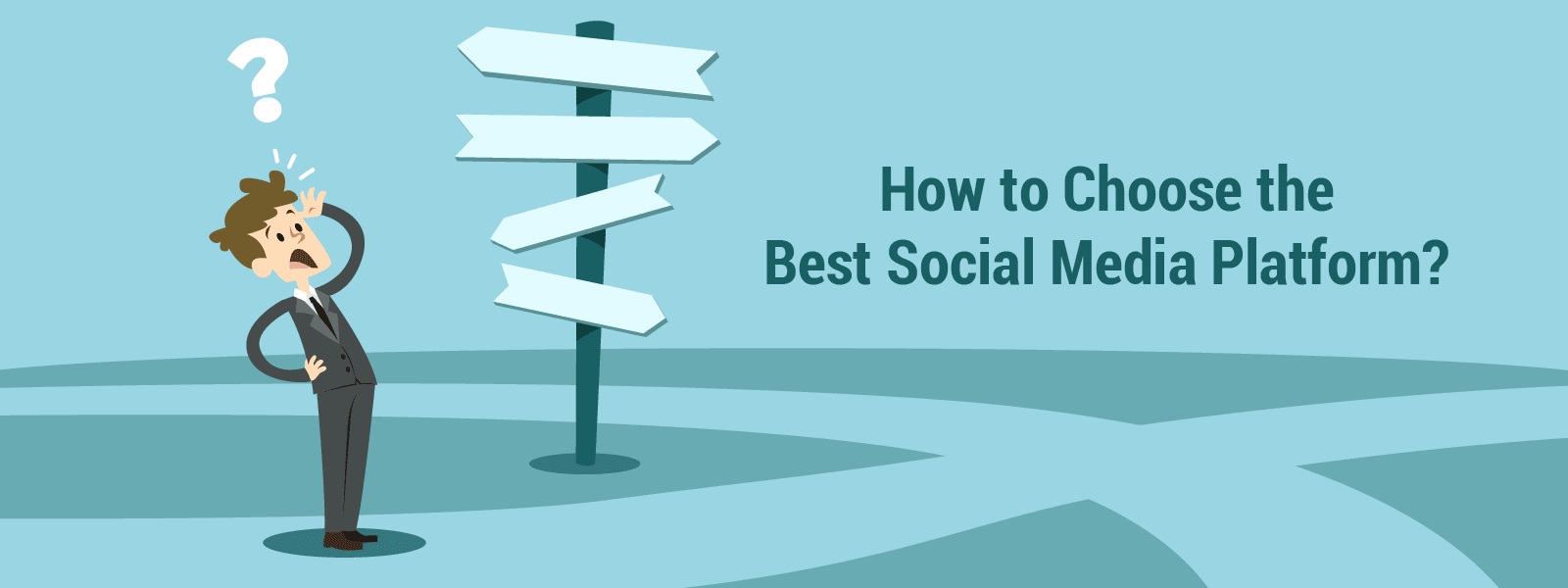
Choosing the right social media platform is the first step towards having a great social media strategy. Without it, you are wasting time.
Understand what you need to get from the social media platforms, why you chose the specific platforms, and whether your audience is available on these platforms.
You will only receive value if the social media platforms you chose match your business and audience goals. The good news, however, is that with proper planning and prioritizing, you can achieve your social media goals.
Having a solid social media plan will also protect your employees and yourself from being spread out too thin. Planning allows you to concentrate on specific platforms. Master them and focus on what resonates with your audience. So, how do you go about this?
1. Research your audience
Find out which social media platforms your buyers spend most of their time on. Identify and list your social media goals then pick out the channels that can help you achieve them. According to research, Facebook and YouTube are the most popular social media networks.
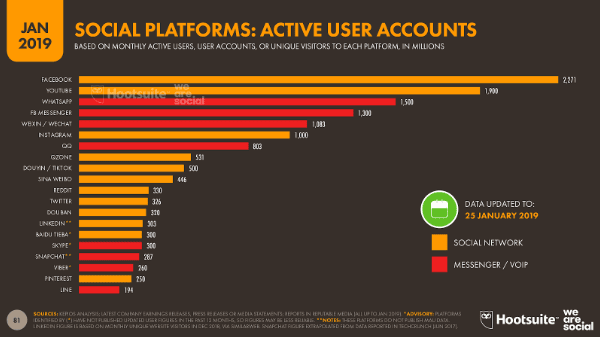
Image Source: We Are Social
Finding out where your audience spends most of their time starts with knowing the social media demographics of each platform. For example, Twitter would not be ideal if targeting an audience aged 65+, but Facebook would.
Very few people in that age group use Twitter, but 41 percent in that age group use Facebook. You can also question your existing customers on what apps they spend their time or use a social media listening tool.
2. Define your social media goals
You should define how you expect a certain social media channel to help achieve your objectives. The reason you chose one platform over another is that it can help you achieve your strategic goals.
For example, if your goal is to increase brand awareness, go for an established platform that has a huge following like Facebook. Their paid ads also help your business find prospective buyers.
If your goal is lead generation, then LinkedIn may be a good place to start by joining discussions or groups. You can also use Twitter and Facebook since they have a low cost per click compared to Google.
3. Find out what channels your competitors are using
Monitoring your competitors gives you a baseline to gauge industry activity and what more your business can do to enhance its competitiveness.
Check out what kind of content they post, how regularly they do it, their engagement level (Likes, Shares, Comments), how active they are on social, and in what platforms they are present. This information will give you insights into what you can do to improve your social media strategy.
Social listening tools can also help you find out what brands have the strongest influence in your industry and how extensive their reach is.
You can use them to check out what content format engages their audience the most, which social channels have the most shares in your industry, check out mentions of the companies, and so much more.
4. Find out what kind of content you aim to create
Different content is suited for different channels. The content type can also complement your business goals or not.
For example, if your business is all about images, then Pinterest and Instagram should be your focus. For video, use YouTube, and for text, use a blog or deploy content on Facebook.
The content you want to share will guide you as you choose the ideal platforms.
5. Find out how many platforms you can manage
Most businesses have an average of 4 to 10 social media profiles. How many platforms does your business need?
Don’t spread yourself too thin, or you will end up diluting your efforts. Using just a few may also not increase your brand visibility and reach.
It’s better to start with one or two. This gives you more time to create and update content as well as engage your audience. Then depending on your capacity and resources, you can add another platform. That way, you can comfortably monitor which platforms are performing well and which posts are working for you.
However, if you decide to use multiple channels, integrate a social media management tool to maximize resources and save time. The social media management tools help you schedule posts in advance on different social media accounts. You can also cross-post the content on channels or edit them depending on the platform. Automating this process allows you to use more channels for your strategy.
6. Consider the platform’s organic reach and algorithms
When considering what channels to adopt, consider their organic reach. Most social media platforms will require you to have a following. However, some channels like YouTube, Twitter tweets, LinkedIn articles, Reddit posts, and Pinterest pins are discoverable through a Google search. Google indexes these channels.
Channels like Facebook and Instagram will require you to publish content in front of an audience or get your network to share it.
Social media algorithms are rules and calculations platforms use to solve problems and deliver results. The platforms use them to deliver the right content to the user. Knowing how algorithms on each platform work can help brands thrive.
For example, Facebook looks for content that creates interactions between family and friends. Interactions are a priority, so they want you to post content that generates more conversations. If your content does that, then you will do better in the algorithm.
7. Consider advertising opportunities
Social media platforms offer advertising opportunities that do not limit your ability to scale. You can reach your targeted audience without waiting on someone to search for your targeted keywords, read your blog, or run your promotion.
When choosing platforms for social media advertising, consider how they perform organically. Use those platforms where your organic content strikes a chord with your fans. Choose platforms that are popular with your target audience. For example, if your brand is targeting young adults, utilize Facebook, YouTube, and Instagram.
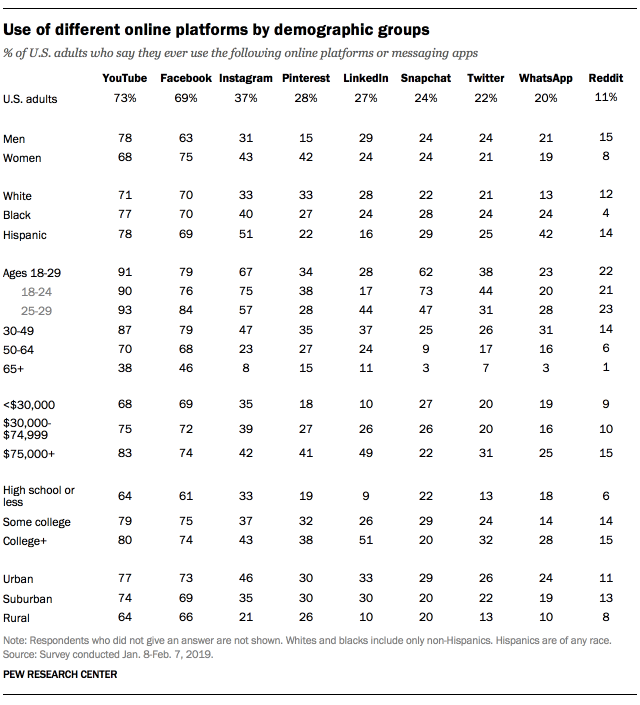
Image Source: Pew Research
Social Media Platforms Available For Your Business
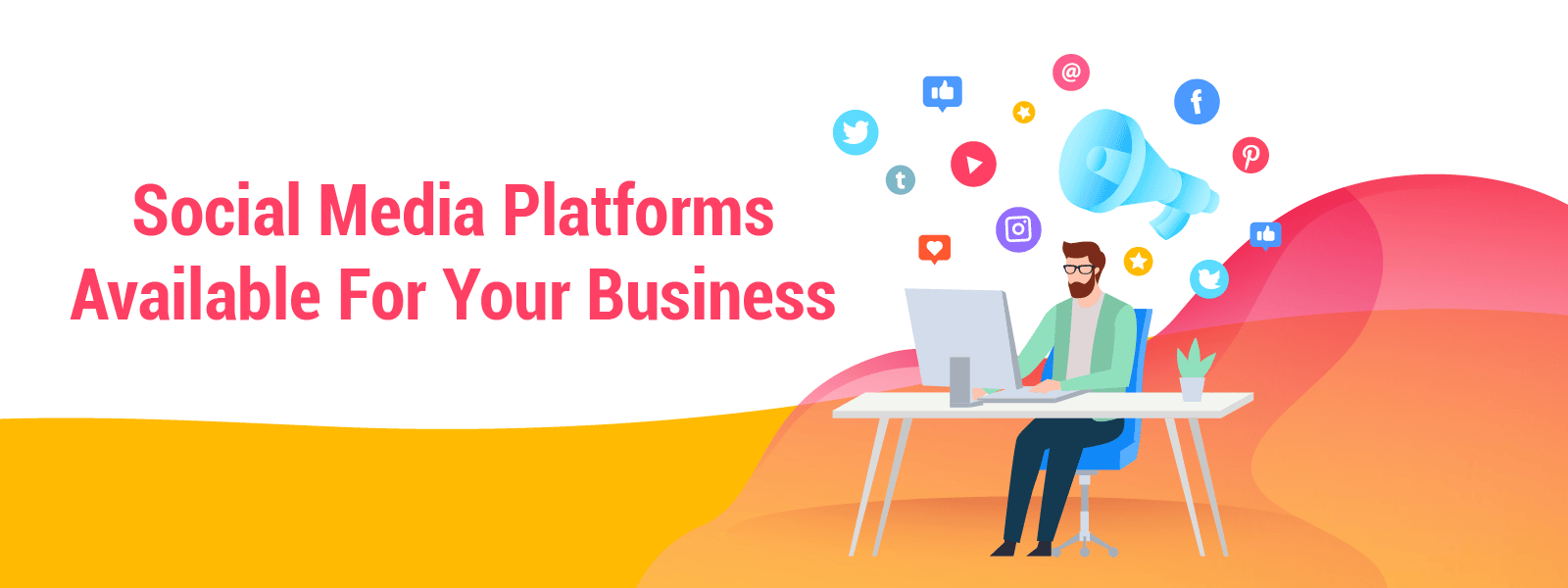
Once you have defined the above information, now it’s time to look deeper into each platform and how its adoption will mean for your business. To put this into perspective, we shall highlight the following popular platforms:
- YouTube
Facebook is the number one ranking social media platform with the highest number of active users.

Image Source: We Are Social
As of 2019, Facebook had over 2.38 billion users out of 3.48 billion social media users. It’s also the most widely used social media platform and represents the population as a whole. So, odds are you’ll find your crowd here.
With Facebook, your brand can create a page and share different forms of content, including videos, written text, and images. It also offers advertising opportunities with the ability to target specific audiences and optimize.
Facebook advertising allows you to run different forms of ads, even on some of their other social media platforms, including Instagram and Messenger. You can run:
- Video ads
- Click-to-call ads
- Stories
- Lead ads
- Photo ads
- Messenger ads
- Carousel ads
- Slideshow ads
- Collection ads
- Playable ads
It allows you to target prospective customers depending on locations, jobs, age, demographics, interests, and so much more. It’s a great option since you display ads to specific people who would be interested in your brand.
Facebook Messenger allows you to send direct messages to customers. It has access to a large user base and advertising options. Ads specifically designed for Facebook Messenger prompt clients to message your business once they click on your ad. It’s a great way to reach customers when they are in need.
With Facebook, you can use video marketing as a strategy. According to research by VEEDYOU, 72 percent of consumers prefer to watch a video when learning about a product, 53 percent will purchase after watching a video, and 96 percent use it when they want to learn about a brand.
Use Stories to position your brand and an informative page that will act as a secondary landing page and provide proof of existence.
Facebook statistics:
- Most B2C marketers, 97 percent of them to be precise, use Facebook, and the same applies to B2B marketers at 91 percent. 61% of marketers also consider it the most important social platform. (Social Media Examiner)
- Facebook ranks second from Google as the ad platform with the best return on investment.
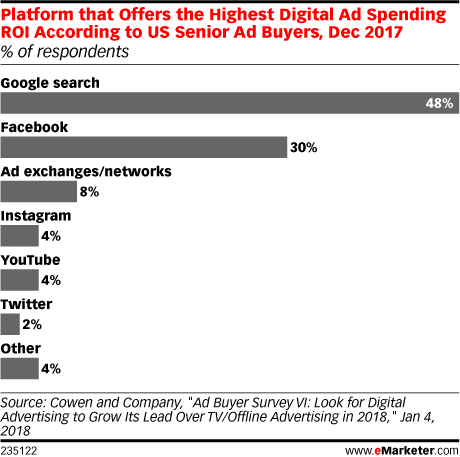
Image Source: Emarketer
- Out of the businesses using Facebook Live to market their brands, 78 percent consider it an effective marketing tool.
- Forty percent of consumers watch videos on Facebook. It’s the second favorite video channel after YouTube.
- It is also used by both men (63 percent) and women (75 percent) including those 65+ years old (46 percent) as indicated by Pew Research.
YouTube
Currently, YouTube has over one billion users and is the second top visited site on the internet after Google.
Out of this one billion users, 68 percent use it when making purchase decisions. Consumers turn to video when they want to figure out what they are buying, and this has increased watch time on YouTube.
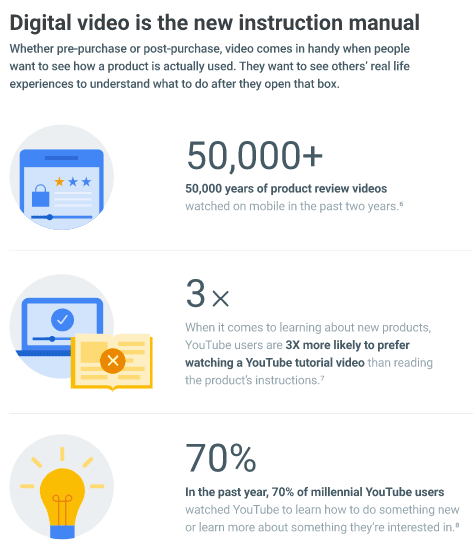
Image Source: Think With Google
YouTube is also great for advertising since, according to research, visual attention to ads on YouTube is higher than that on TV. The majority of advertising time on TV is spent multitasking, skipping ads or switching channels.
Only 45 percent of TV ad time receives attention. On the other hand, consumers pay attention to 62 percent of the advertising time on YouTube mobile. This attention increases to 84 percent for paid YouTube mobile advertising.
Image Source: Ipsos
You can create a variety of ad types with YouTube, and that includes search ads, skippable commercials, non-skippable, and short ads (6 seconds or less). YouTube is also a great place to use influencers for marketing your product since they discuss it as part of their videos. Find a channel that has your target audience and have the influencer put out your message in front of their viewers.
YouTube has a wide reach across 76 different languages and used by both men and women.
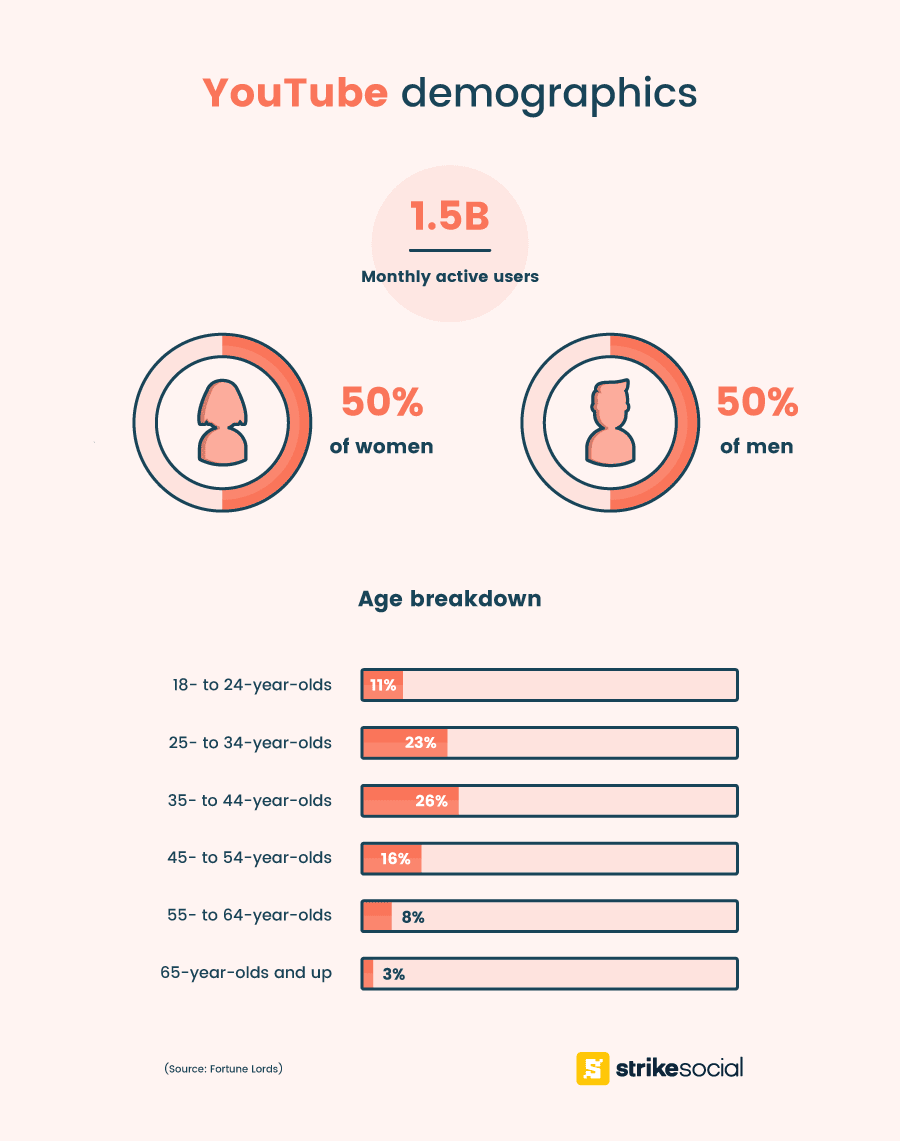
Image Source: Strike Social
If you want to get more views, subscribers, traffic, and get ranked on search, apply the YouTube SEO guidelines to your videos.
Twitter has over 321 million active users. It supports various media types, including images, videos, text, GIFs, and links. Although the characters are limited, you can create tweet threads – two or more tweets strung together with replies that connect the tweets in one narrative.
Twitter is popular among both men and women, although used mostly by 18-49-year-olds. It’s popular among those with a college education and used mostly by those in the urban areas.
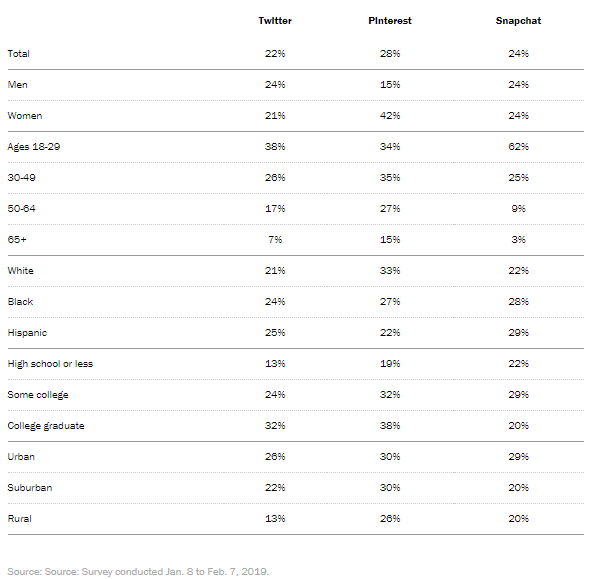
Image Source: Pew Research
Use Twitter to put up real-time and instant updates, trending news, or share opinions.
Twitter allows you to use hashtags, which provides your brand with a 1,065 percent increased engagement rate.
Twitter ads are also a great way to increase brand awareness, increase engagement, grow a following, get more website traffic, and promote your apps. All you need is the ad objective, and then you can use audience-targeting features to reach the audience you want.
You can target consumers from a certain location using their interests, or target followers of an account after targeting, bid for each interaction, and budget for the ad. Remember to include strong calls to action and avoid hashtags or mentions in your ads.
With Twitter, you can use live tweets to share photos of an event, updates, and promotions using a branded hashtag.
Provide value to your followers and contribute to discussions. If all you do is promote your brand, people will stop following you.
Share thoughts or interesting content relating to the industry without promoting your brand occasionally to boost visibility and grow an audience. Contribute to other discussions from your followers and those you follow too.
There are over one billion active Instagram accounts every month, and over 500 million active accounts daily. If your brand’s target audience is teenagers, then Instagram is a great platform to use. Why? How about because 72 percent of teenagers use it.
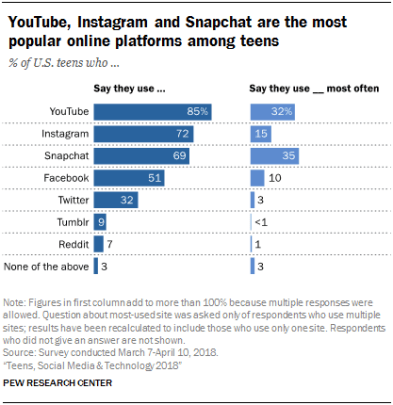
Image Source: Pew Research
More than 80 percent of accounts follow a business which makes it an excellent place to have your brand noticed.
It’s a great platform for brands that can post images and videos of physical locations and products. However, this should not limit you since you can find creative ways to showcase your brand, customers, and employees.
You can stream live videos or upload long-form videos on Instagram TV. Instagram also has an option for Instagram stories, which are short, interactive slideshows, or clips that are available for 24 hours on your feed.
You also need to be consistent in your content, provide quality, value, and use amazing hashtags. Posts with more hashtags increase reach.
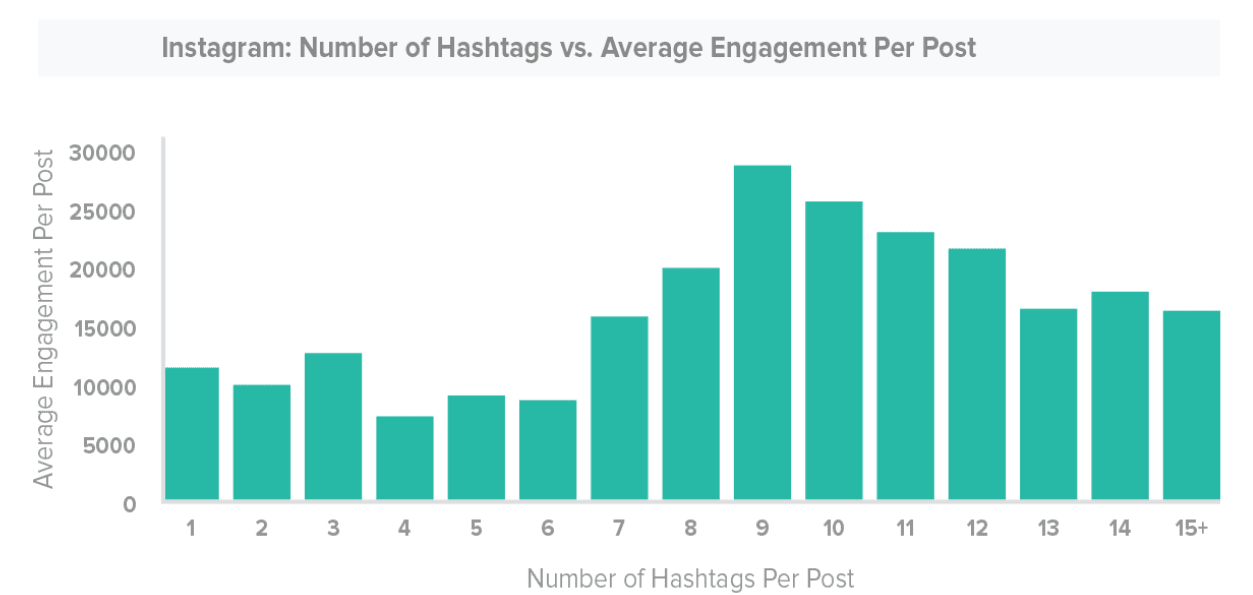
Image Source: Social Media Today
Be with your customer at every stage in their purchase process and leverage each touch point. People use Instagram to discover trends, research, and decide.
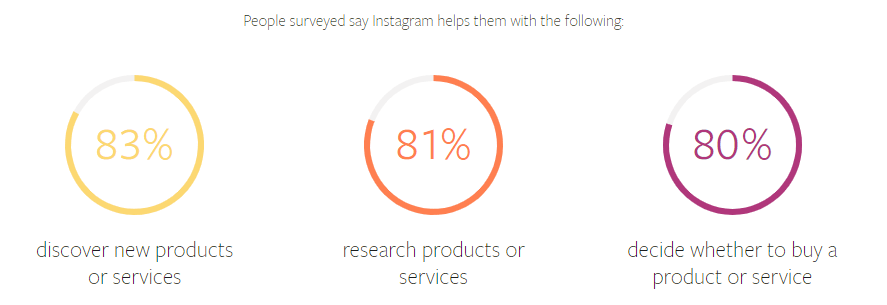
Image Source: Facebook
Instagram ads offer the same variety as those on Facebook. It’s a great place to create awareness and for potential customers to discover your products. Instagram makes it possible for you to run an ad without an account so long as you are on Facebook.
You can create video ads, stories, photos, collection ads, and carousels. It allows you to target specific audiences and goes further to create custom audiences based on your followers’ characteristics.
If you have an online store, you can sell and promote products using Instagram posts. With Shopping on Instagram, you can tag products with prices and provide links that direct customers to your website.
It makes it easy for them to purchase products they see on your feed. Fifty-four percent make a purchase when seeing the product or after seeing it on Instagram. With Instagram, potential customers can search your brand and after purchase, post stories to show off their purchases.
Brands on Instagram are considered popular by 78 percent of users, creative by 77 percent, relevant by 74 percent, and entertaining by 76 percent of users.
Instagram is preferred mostly by women and those aged 18-49 years. However, men and those older still use Instagram but in lower numbers.
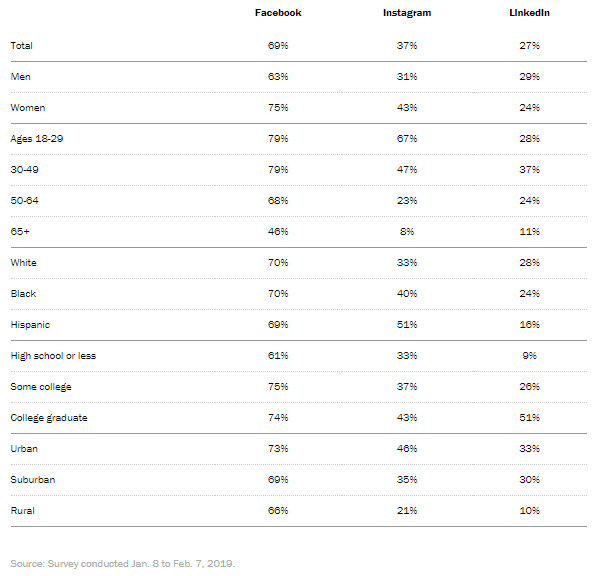
Image Source: Pew Research
LinkedIn has over 630 million users, where 51 percent are college graduates.

Image Source: Pew Research
LinkedIn is great for lead generation and is 277 percent more effective at this than Facebook or Twitter.
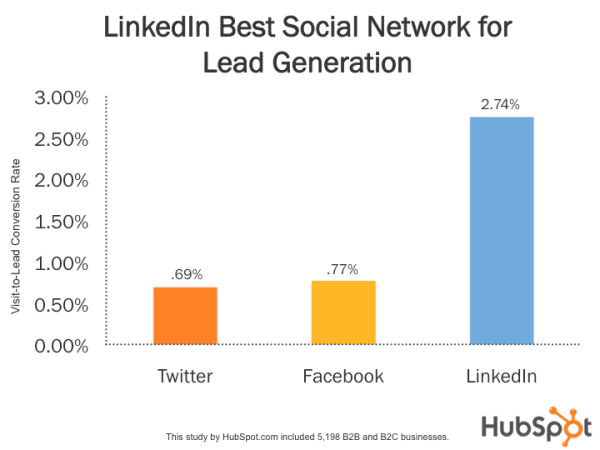
Image Source: HubSpot
Seventy-nine percent of marketers believe it’s a great source for leads with B2B marketers getting 80 percent of their social media leads from it.
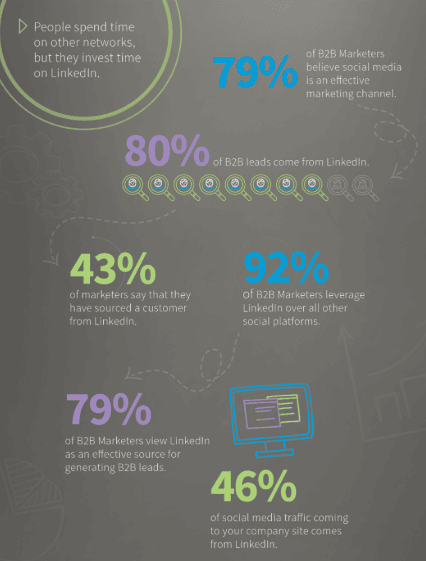
Image Source: LinkedIn
LinkedIn is a great platform for content marketing and drives more than 50 percent of social traffic to sites. It’s a great app for both B2B and B2C businesses.
Make use of connections with other professionals, create public posts, use hashtags, and write articles to reach greater audiences.
LinkedIn ads allow you to target unique audiences and control your budget. Ads on LinkedIn appear on the sidebars or in news feeds, but they’re also those you can send directly to target audiences in their email.
Pinterest is a great photo-sharing platform, with 265 million monthly active users. Your pins on the Pinterest platform link back to your website, making it a good way to drive traffic to it.
Women prefer it in terms of demographics, but usage by other groups is good, too, including those 65+ at 15 percent.

Image Source: Pew Research
Pinterest Ads are great for awareness and are easy to create. Pinterest allows you to target depending on the audience, keywords, interests, additional keywords they provide based on ad content, demographics, and where you want your ad to show (in their search results, during browsing or both). Using Rich Pins allows you to add context to the idea by showing extra information.
Fifty-nine percent of millennials use Pinterest to discover products, while 90 percent of Pinterest users use it when deciding to purchase. Pinterest also drives 33 percent more referral traffic to sites than Facebook.
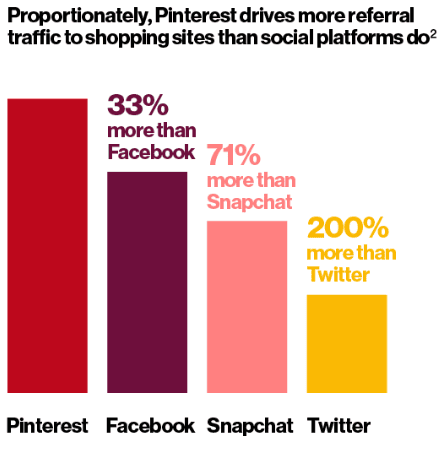
Image Source: Pinterest
Image Source: Pinterest
Pinterest also has Shop the Look pins that allow buyers to purchase directly without leaving the app. Buyers can shop each item, browse similar products, and shop across web and mobile whenever the customer is ready and with ease too.
Conclusion: Choosing the Best Platform for the Best ROI
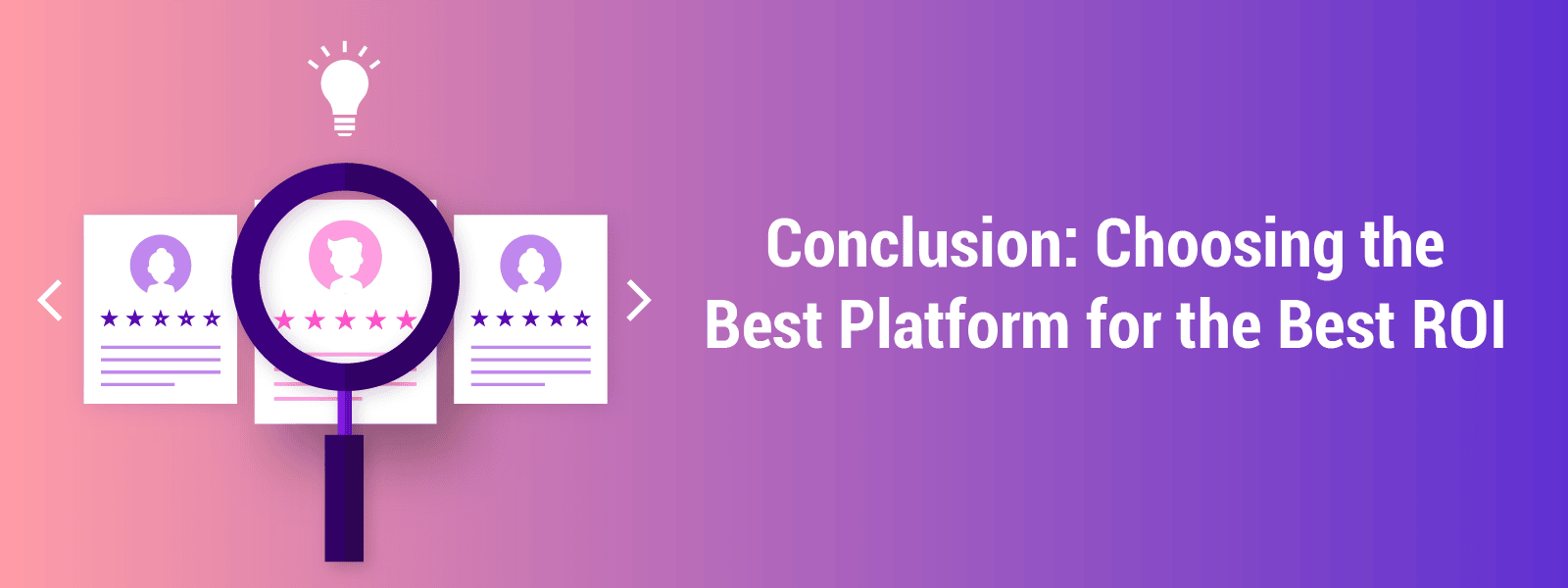
To determine the ROI of your social media efforts, decide what key performance indicators are important for your business. Knowing what your goals are will help you effectively choose a platform that produces the results you want.
Using the right platform(s) will help you see some definable and measurable results based on activities performed on the platform(s).
Remember that for every platform you choose, you also need to measure your efforts. Without measuring, you cannot improve. Metrics provided by data collected from the platforms allow you to gain insights into what you are doing right and what needs to change.
To achieve your goals through social media, you must understand how each platform will help you achieve set objectives. It means that after choosing, you need to monitor outcomes that will help you define success. If a platform is not working for you, change it, or find better ways to reach your audience with it.

